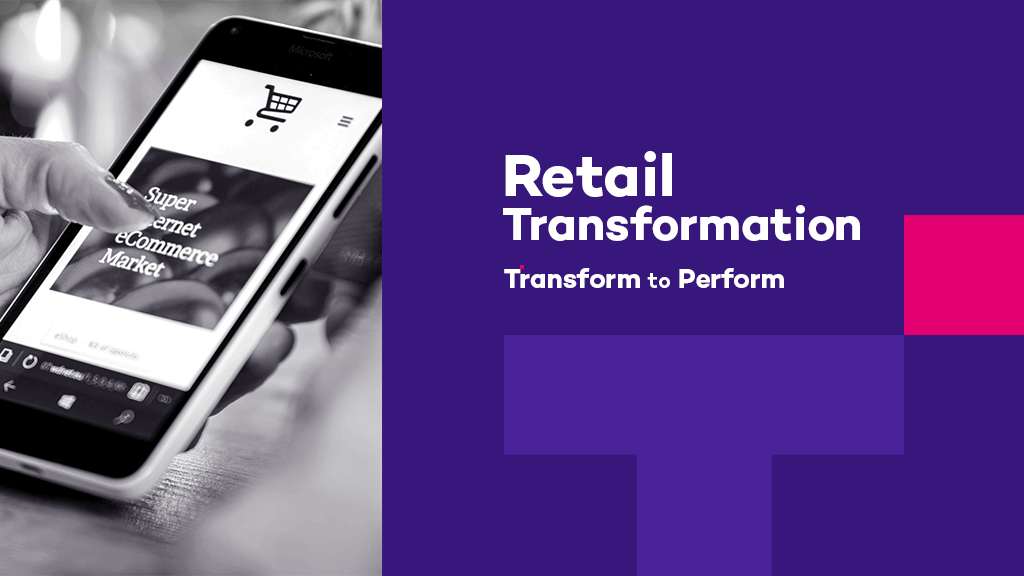3 decades of innovation: how has the retail industry transformed itself?
September 1, 2021
Home › Blog › Transform to Perform › 3 decades of innovation: how has digital retail industry accelerated?
The global retail industry has experienced successive waves of innovation over the past three decades. These have profoundly reshaped the shopping experience for consumers around the world. Digital retail is accelerating. This revolution has deeply transformed the relationship between customers and retailers and it continues to accelerate.
- According to eMarketer, e-commerce grew 27.6% in 2020 as sales reached more than $4 trillion, accounting for 18% of all retail sales.
- The firm noted that this online segment grew even as overall global retail sales fell 3% in 2020.
- E-commerce is projected to top $5 trillion in sales by 2022. While the pandemic accelerated e-commerce, the momentum has been building for more than 25 years.
According to eMarketer, e-commerce grew 27.6% in 2020 as sales reached more than $4 trillion, accounting for 18% of all retail sales. The firm noted that this online segment grew even as overall global retail sales fell 3% in 2020.
Digital retail: a scalable transformation for the retail industry
The first turning point of this disruption happened in the 1990s with the arrival of online shopping. Basic sites such as Amazon, eBay, and various travel services offered access to a much larger inventory of products.
They also offered lower prices, leading to newfound convenience. Eventually, this gave way to more sophisticated shopping sites in the 2000s. Said sites used richer data and powerful AdTech to specifically target buyers through various tactics. Including retargeting, programmatic advertising, and eventually social media to improve customer acquisition. Mobile amplified this trend with new data sources.
Digitalization as a game-changer for the retail industry
With increasing digital retail , new and improved technologies and behaviors came to light. When it comes to physical stores, change is also underway. For instance, employees are being equipped with tablets that allow them to access the most relevant data.
For instance, luxury retailer Burberry placed iPads in its stores, so customers could link in-store and online shopping and reported that sales grew 15%. At the point of check-out, new technologies also facilitate a greater range of payment methods such as flashing the smartphone. Companies like Amazon have gone further by creating check-out free stores. These revolutionary stores use computer vision and sensors to track items placed in a basket for automated payment.
Digital retail: Implementing predictive technologies to boost customer engagement
Even more radical changes are happening for the retail in the back office and online, to evolve into a digital retail industry. Companies are using AI-driven pricing strategies, particularly online, to sway purchase decisions.
The introduction of predictive inventory management ensures that companies have the right products on hand. Brands such as Louis Vuitton, Dior, and Adidas have been working since 2017 with AI startup Heuritech. Founded in 2013, the company uses computer vision to scan social media to spot emerging fashion trends. In 2020, French retailer Leroy Merlin became one of a growing number of retailers to add a marketplace that lets its website offer a wide selection of vetted 3rd-party sellers.
More changes
And companies are optimizing the supply chain by introducing robotics and software into warehouses; along with such concepts as micro-fulfillment centers. During delivery, to guarantee a positive experience throughout the entire customer journey, they are making real-time order tracking returns seamless.
There is a new cornerstone in the retail industry: data
There is now a third phase in motion. It is driven by the growing availability of data that is fueling a greater push for automation and personalization. Also, lines are getting increasingly blurry between digital and physical, which was called “phygital”.
COVID acted as a catalyst
During COVID, many of these digital trends converged. Indeed, the most advanced retailers were able to quickly adapt their purchasing experience by launching such options as click-and-collect. Target, for instance, reported that such sales grew 700% in Q2 2020 compared to Q2 2019. According to eMarketer, US shoppers spent $72.46 billion on click-and-collect purchases in 2020, up 106.9% from 2019. To facilitate such a change on a short timeline, all the pieces needed to be carefully aligned. This ranged from the UX of the site to warehouse logistics to payments.
Adopting the right digital tools may make or break a brand
As digital technologies have reinvented shopping, customers’ expectations have also grown and become more demanding. As a result, brands must be fast and agile to adjust. The key: Adopt the latest tools to attract consumers and create the kind of loyalty that will keep them coming back in an era where competitors are just a click away.





